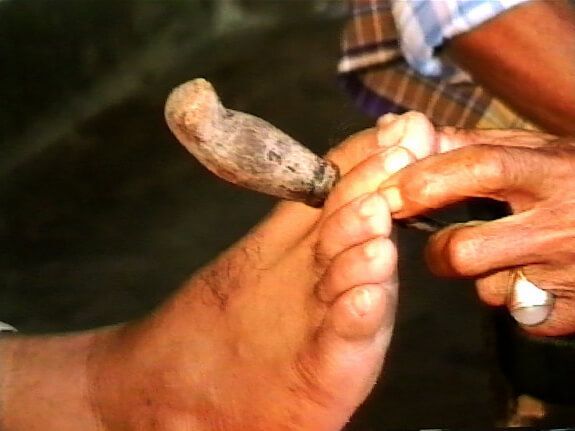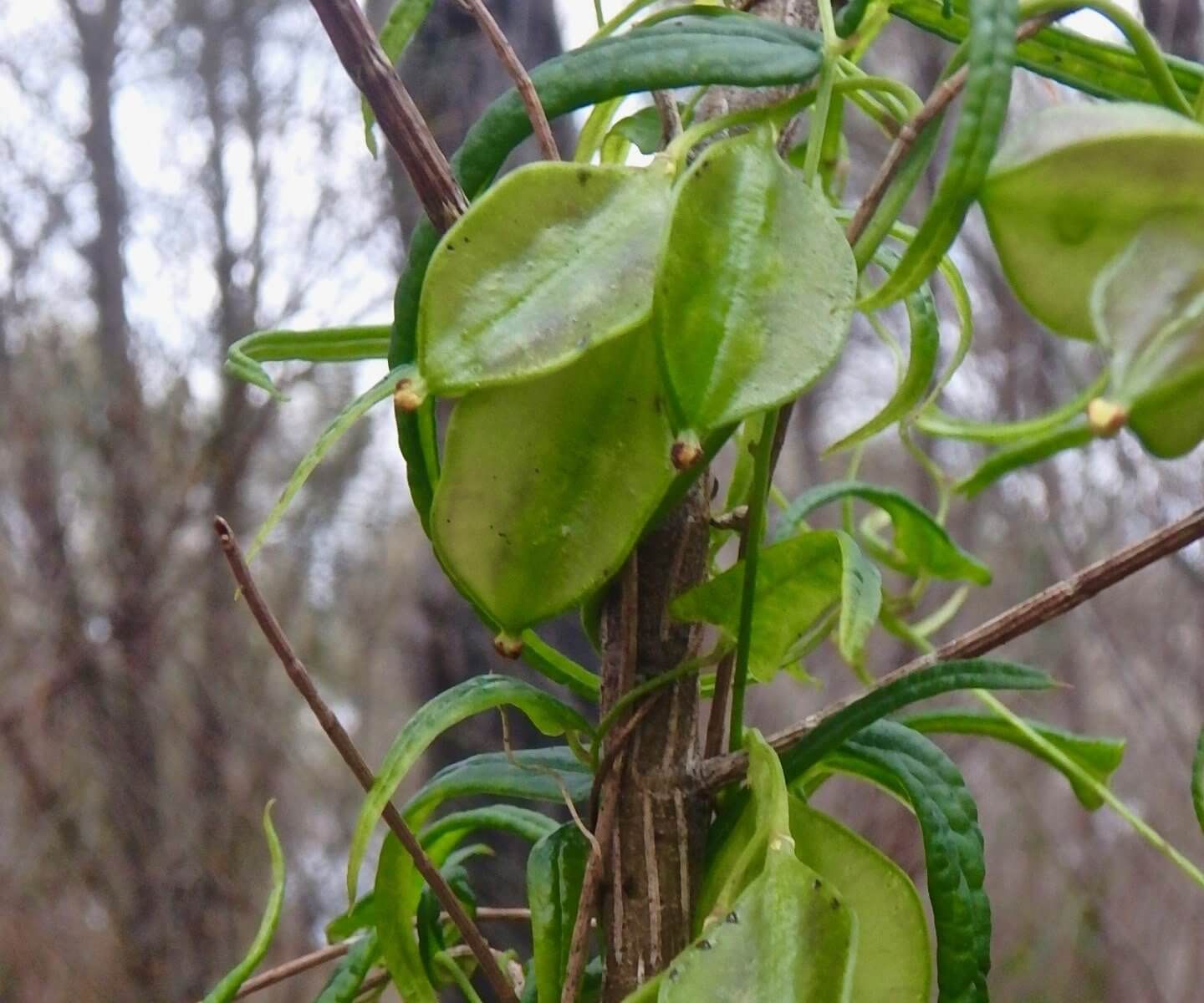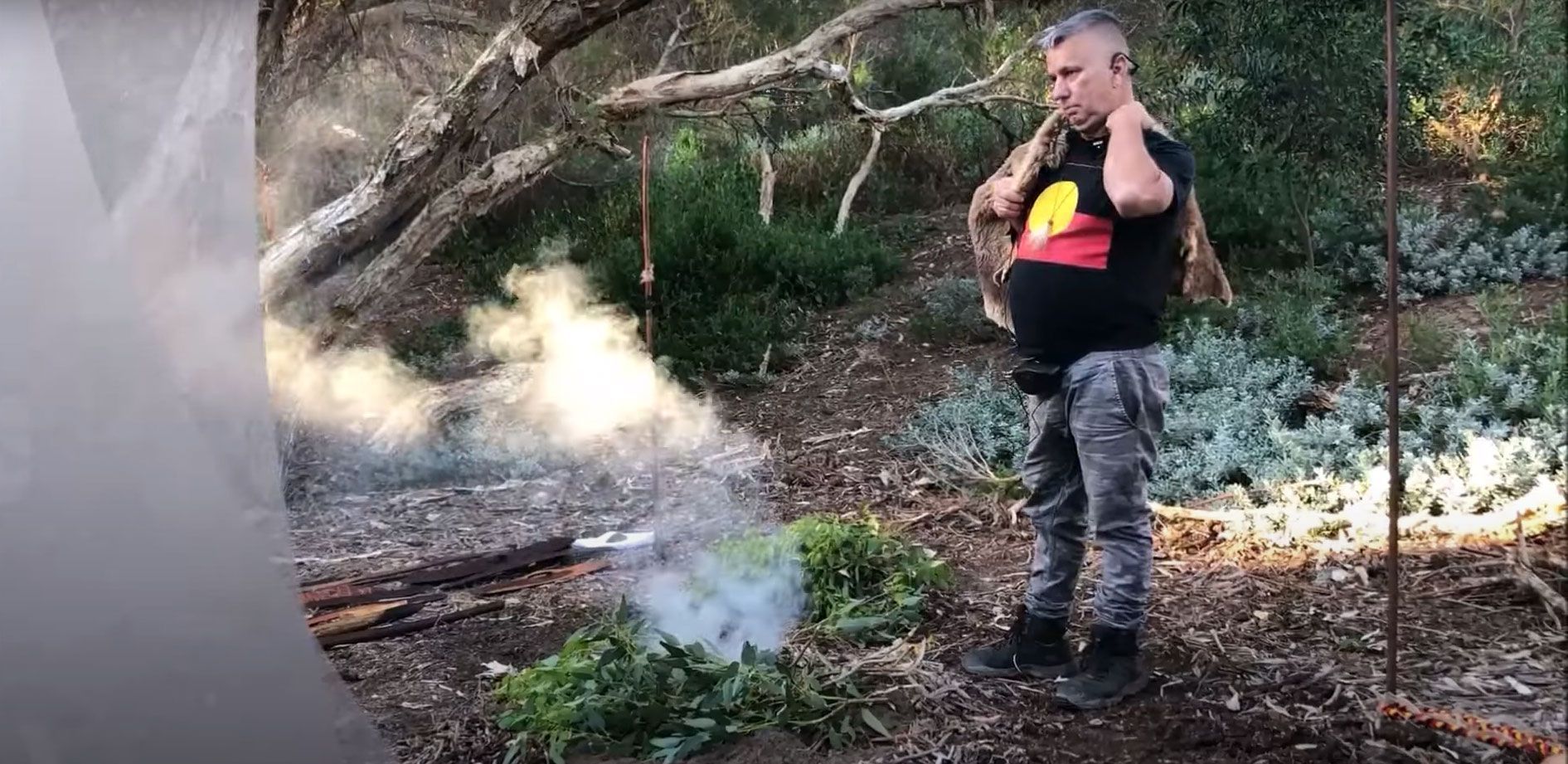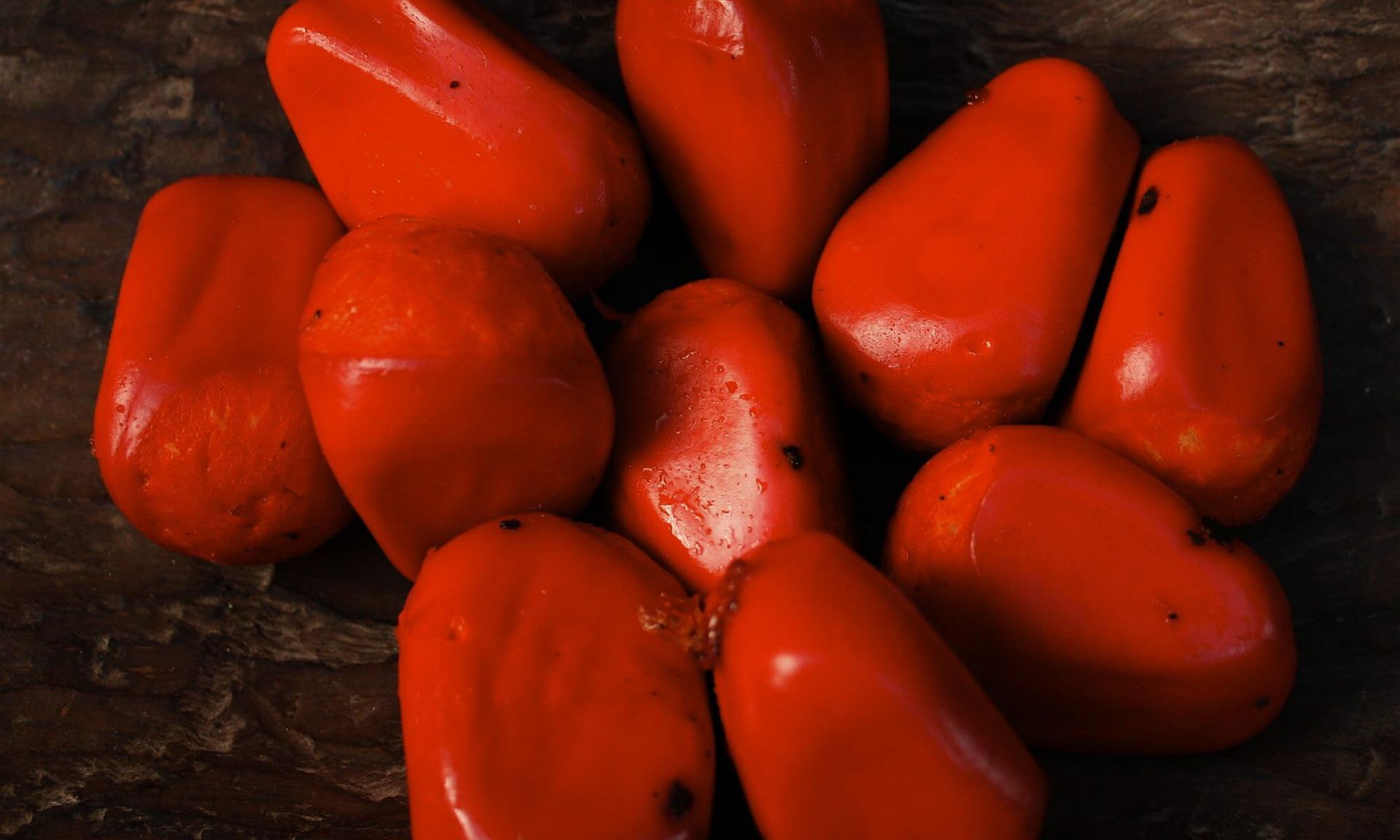Retributive love magic practice in Lombok
Overview
In some Indonesian societies magical revenge is an accepted means of restoring community harmony. Certain practices such as mild forms of black magic have become institutionalised to prevent on-going social enmity between members. In rural village Lombok where women had multiple suitors, a mild form of black magic known as banggruq was practised to resolve potential conflict and to restore face to the pride of wounded suitors. In modern day Lombok banggruq is no longer practised.
TRhe Jilted Suitor's Revenge
The villagers looked up as they heard the frenetic shrieks and screams of a young woman running down the main street tripping over her sarong as she tried to take it off. Getting back onto her feet she pulled off her blouse exposing her naked breasts. She then ran on, screaming and laughing hysterically while her mother and new husband followed, pleading with her to stop. Other villagers joined in the pursuit. A group of men sitting on the side of the road laughed while women looked out their windows and pointed to the half-naked woman running along the street in a state of abandonment.
When the young woman arrived at a garden with betel nut palms, she turned to face her onlookers and with a crazed expression on her face, began to climb a slender Areca palm at great speed and agility while her husband and mother pleaded for her to come down. When she got to the top of the tree she broke into hysterical laughter and urinated on her audience below. One of the on-lookers yelled out ‘layang eroq banggruan‘ (kite shower).
After some time and a great amount of coaxing, the young woman reluctantly came down from the tree. As soon as she reached the ground a blanket was thrown over her and she was bundled off by her mother and new husband to a local belian (healer) for treatment. The young woman was a victim of a mild form of seher (black magic) known as banggruq.1
Banggruq is a type of retributive magic or jilted lover’s revenge. The magic consists of a spell (jampi) and a number of substances blended together by a practitioner skilled in the art of senggeger (love magic).2 The substances are inert and harmless until the name of the person targeted is ‘called up’ and a trap is laid. The trap consists of a cross-like symbol known as cupak dara (literally ‘pigeon’s footprint’) which is drawn on the road along which the recipient will walk in the post-nuptial procession to her parents’ house. This colourful ceremonial procession is part of the nyongkolan (Sasak wedding rituals).

Prior to the procession taking place the jilted suitor seeks his revenge by calling the woman’s name and announcing the words ‘I put a banggruq upon you’. This triggers the magical formula encapsulated in a small pellet or pil which he carries with him and will use to draw a cross on the pathway over which the bridal party will pass. He places the pellet or what is colloquially called the empan or “bait” at the centre of the cross in the belief that no matter from which direction the bridal party passes, the targeted woman will tread on the bait and become stricken by the magical powers of the banggruq.
Only the named victim is affected. It may take several days for banggruq to manifest. The symbol of the stylized cross and the number nine are important ingredients in the ritual setting of banggruq. The cross represents all the cardinal points of the compass. There are eight possible directions and the bait is placed in the ninth position in the centre. In the preparation of the banggruq it is said nine ancient demons are invoked through the jampi (spell). No matter which direction the victim passes from, she cannot escape the influence of one or more of these supernatural beings.
The deranged behaviour associated with banggruq can manifest itself in many different forms. One belian stated that there was a catalogue of over a hundred different aberrant behaviours that fit the category of banggruq. However, there is always a common theme in that the afflicted woman publicly humiliates herself before being rescued by her family and new husband and taken to a local healer for treatment.
One woman who had been a victim of banggruq described her experience as follows:
I felt that my body was taken over by another person. I was moving but had no control. I was in my body but my body was in someone else’s hands. After that I did not remember anything but they told me that I ran naked through the village and picked up a knife and began to chase my new husband.
It was suggested by some of the belian interviewed that women became possessed by a type of demon that took control of their mind and body, and that it is not the woman who displays the crazed behaviour but rather the demon possessing her. 3 Banggruq usually manifests itself while the bride is staying at her parents’ house. Her parents often anticipate this behaviour, as do other villagers, especially if the woman is known to have been lais, that is, popular with many suitors. In some cases the bride’s mother and the bride herself find out through the village gossip network that a banggruq is to be ‘put upon her’ by one or more of her ex-suitors. Whether a young woman has been led to believe that magic has been put on her or not, the cultural expectation is that she must necessarily display some form of begeremon or delirious behaviour not only to the villagers and her parents but most importantly to her new husband and his family to prove that she is an attractive and highly sought-after woman.
The young bride is also aware that former suitors will continue to bear grudges and suffer loss of face (as will their families) if she does not publicly humiliate herself in the socially acceptable banggruq manner. In the past some young women had up to ten suitors. If each of these young men felt resentment and loss of face over being jilted by the same woman, each may attempt to put a banggruq on her. When the woman becomes afflicted, each suitor claims responsibility, believing that it was his banggruq that ‘caught’ her. In this way damaged pride and loss of face on the part of the young men and their families was restored. Banggruq was a socially acceptable and highly effective means of diffusing jealousy, anger and loss of face on the part of jilted suitors and their families.
Rival suitors do not usually blame the successful suitor (the woman’s husband) for their feelings of hurt pride and loss of face but rather blame the woman who has jilted them. As one jilted suitor said: ‘ I put banggruq on her because I wanted to teach her a lesson.’ Even though he had not had any sexual relationship with the young woman, and had only visited her two or three times in the company of her auntie, he said that his peers in the village knew he was interested in her and when she married someone else he had lost face in front of his peers. He had to recover his honour by putting a banggruq on the woman who had caused him this distress.
Treatment of Banggruq
Basically there are three kinds of treatment for the condition known as banggruq. The most common of these is the placing of a brass object, often a spoon (Sasak, sidut kuningan) between the first and second toes of the victim’s left foot.4 When the toes are pressed over the brass object, the victim yells out her tumpu, that is, the medicine she requires to bring her back to normality. This tumpu can be one of a wide number of medicinal substances used in the relief of mild black magic-induced conditions.
Pious Moslem healers (Haji) treat banggruq by placing a piece of white paper between the first and second toes of the victim’s left foot. They repeat a doa (Arabic prayer or supplication) into a glass of water and give this to the patient to drink; the belief being that the water becomes medicinal under the influence of the sacred doa. Recovery is said to be instantaneous.
A highly respected belian who had once been a practitioner of the traditional Waktu telu religion remarked that in the old days magical oil was rubbed on the victim’s head and a small amount of oil was also ingested. This treatment alone brought instant relief. He stated that by the time the victim was brought to a healer the banggruq had lost most of its potency. He further commented with a wry smile: ‘It only happens to a woman once in a lifetime.’
Throughout villages in West Lombok there are many anecdotal accounts of banggruq and its different behavioural manifestations. One of the most incredible accounts is that of a contagious form of banggruq known as banggruq tolong. Tolong is a Sasak word meaning ‘help’. This type of banggruq is said to manifest itself when a newly married woman begins singing and dancing for no apparent reason, as if she were intoxicated from drinking too much tuak (a local alcohol made from the fermented sap of the coconut palm). Her delirious singing and dancing continue unabated and if a person touches her in this state, they too will fall victim to banggruq. It is said that a victim can afflict up to seven other people who in turn can afflict seven others and so on to the point where its multiplying effects can disrupt whole villages.
Many of the older villagers had heard tales of banggruq tolong from their parents or grandparents. Only one old man in his eighties (interviewed by us in 1992) had ever witnessed it and even then it was from afar. None of the belian (traditional healers) interviewed knew the ‘ilmu’ (knowledge) to control this communal enchantment that from anecdotal accounts appeared to resemble a type of hysterical contagion brought on by the communal belief in the power of the jampi (spell). It was believed that the contagious effects of banggruq tolong lasted for an indefinite period until the recipients collapsed in a state of exhaustion. Most belian interviewed stated that the ilmu for the cause and treatment of banggruq tolong had been lost long before they were born. It was their understanding that this knowledge was part of a deep and dangerous magic of the tetoak laek (ancestors) that had long been forgotten.5
Banggruq in its different manifestations is no longer practised in contemporary Lombok society largely as a result of urbanisation, modernising influences on courtship practices and the conservative nature of orthodox Islamic traditions which frown upon occult practices such as magic in all its ramifications. Based on ethnohistorical and case study materials it would seem that banggruq was practised up until the late 1960’s as a socially acceptable and effective means of restoring harmony and diffusing conflict, anger and jealousy on the part of jilted male suitors throughout rural Lombok.
EXPLANATORY NOTES
1. Banggruq refers to the retributive magic whereas banggruan is the condition of being afflicted or possessed by banggruq.
2. Sengegger is the Sasak term for ‘love magic’ involving spells and potions, and is equivalent to gunna-gunna (love magic, Indonesian language).
3. The demon is ‘called up’ by the spell put into the banggruq by the dukun senggeger who prepared the potion. This spell usually involves Sasak words which are unintelligible even to the dukun or belian who are unable to understand or explain their meaning. The words are believed to derive from a deep and ancient mystical language of the Sasak.
4. In the treatment of black magic-induced conditions in males the brass object is placed between the first and second toes of the right foot to diffuse the effects of the jampi or spell (see photo below)

5. The magical and healing powers of the ancestors are both revered and feared. As practitioners of the syncretic folk religion known as Waktu telu they are regarded by orthodox Islamic society as primitive worshippers of demons, jinns and other supernatural beings. Waktu telu was an admixture of Hinduism, folk Islam and traditional animism. The term simply means to pray three times a day instead of the orthodox Islamic practice of five times a day. Orthodox Moslems consider this a non-religion or agama belum (‘not yet a religion’).
ACKNOWLEDGEMENTS
This paper, based on our anthropological field research in Lombok in 1992, was originally written as a paper in 1998 and digitised to website in 2012.



